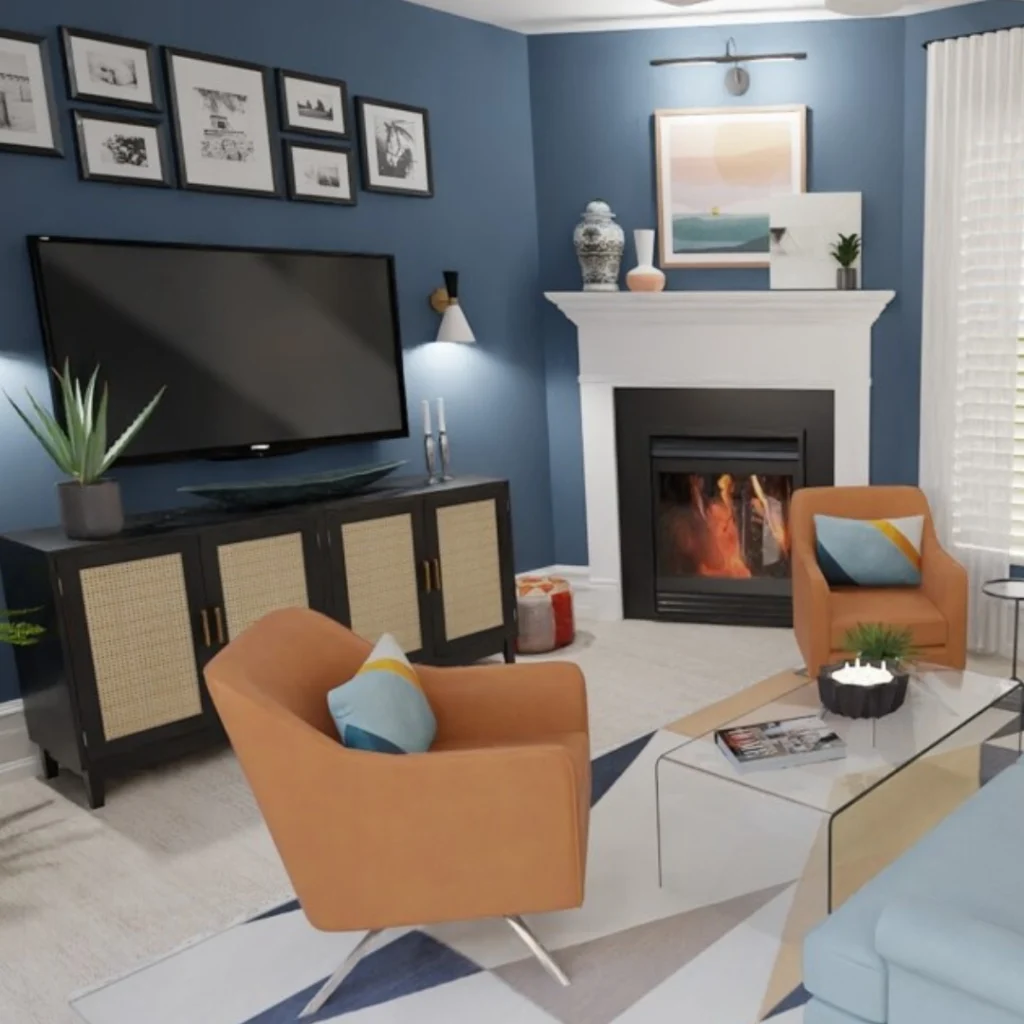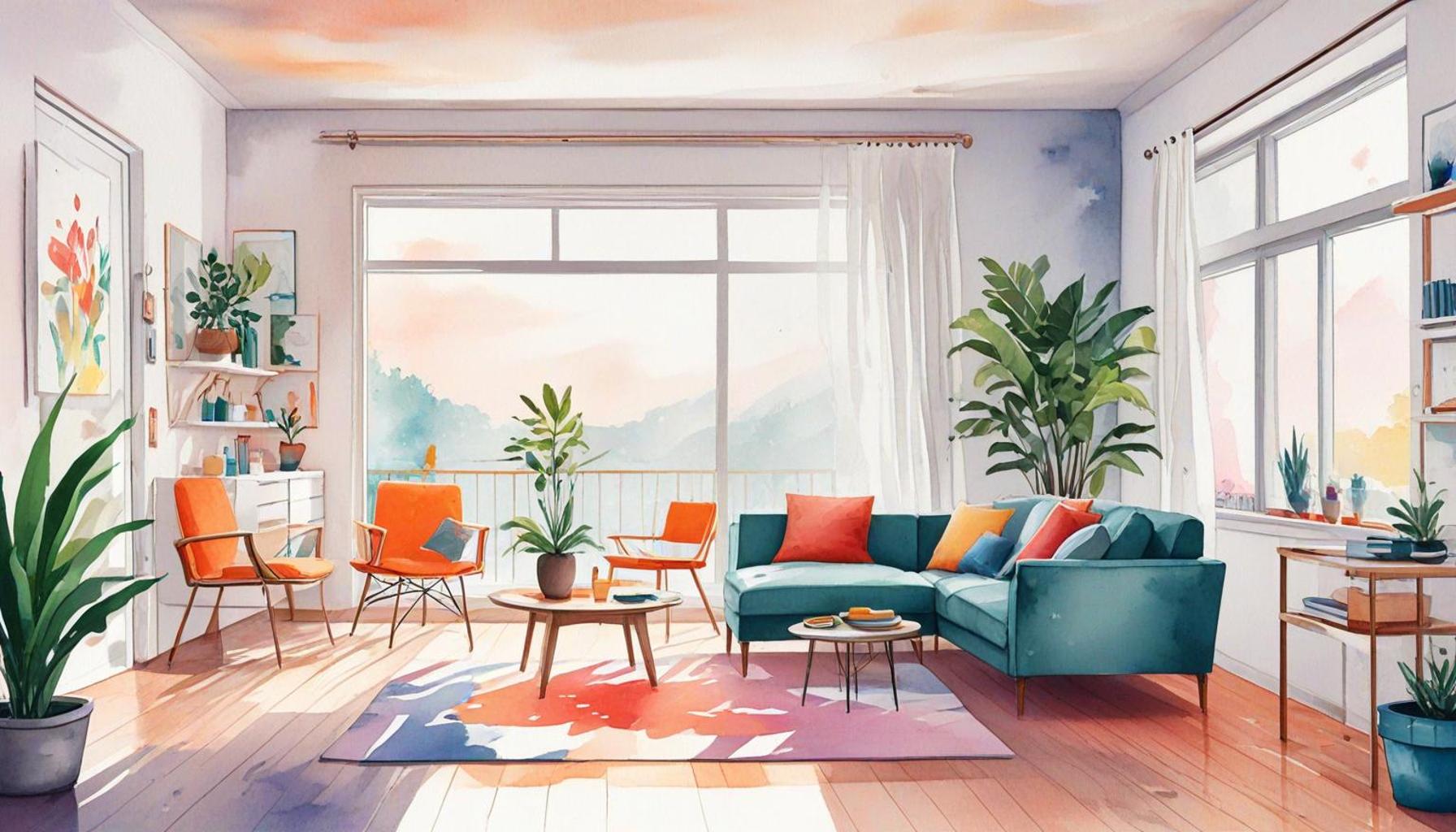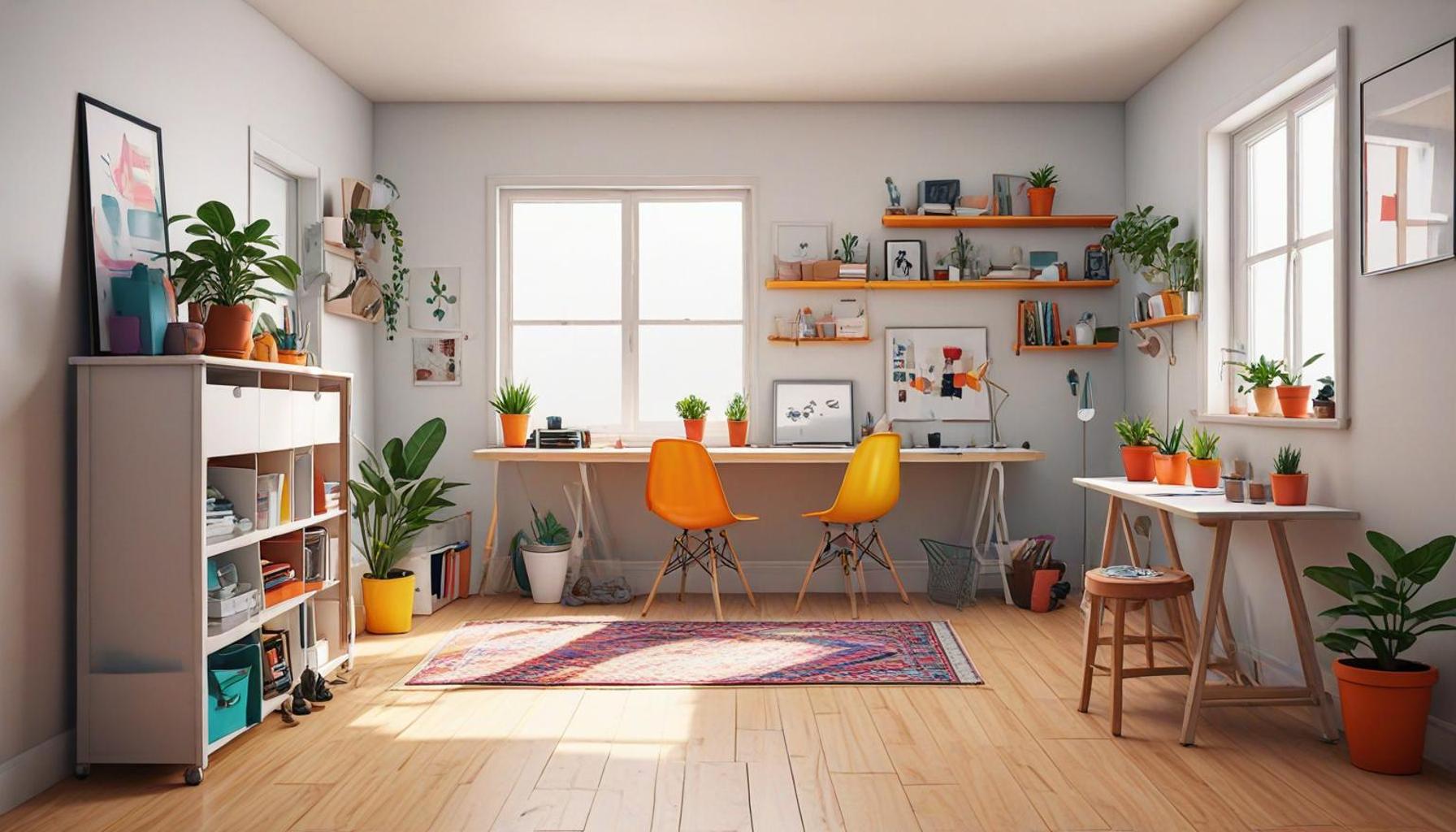Mastering Space Optimization Living with Less Using Compact Techniques

Introduction
In a world where possessions often seem to dictate our lives, the idea of living with less has never been more appealing. Space optimization not only helps create a more tranquil living environment but also nurtures mental clarity and emotional well-being. This article explores the art of compact living, showcasing techniques that allow individuals to embrace minimalism without sacrificing comfort.
Understanding the essence of minimalism goes beyond decluttering; it is about reshaping our relationship with our belongings. By mastering space optimization, individuals can unlock the potential of their living spaces, making them more functional and aesthetically pleasing. The following sections will delve into practical strategies and share resources that inspire simplicity.
Get ready to discover the Top 5 techniques for space optimization that can revolutionize the way you live. Each method offers unique benefits, from improving organization to enhancing your lifestyle, all while encouraging a mindset of intentionality and freedom.
DISCOVER MORE: Click here to learn how to let go without regret
The Art of Compact Living: Techniques for Space Optimization to Live with Less
In a world brimming with material possessions and the quest for an uncluttered life, the philosophies of minimalism and space optimization offer solace and practicality. The art of living with less, contrary to popular belief, transcends the act of owning fewer items. It integrates strategies for organizing spaces in ways that cultivate restful environments and support dynamic lifestyles. This article delves into five significant techniques of space optimization that empower individuals to embrace a minimalist lifestyle. Join us as we explore these strategies from five to one!

5. The 80/20 Rule
The 80/20 Rule, or Pareto Principle, is a well-established concept applied across various fields, including personal organization and space management. The core idea suggests that approximately 80% of outcomes arise from 20% of activities. This principle, when applied to our personal spaces, implies that 80% of our needs get satisfied by merely 20% of our belongings.
To harness the power of this rule, you must first identify the items you regularly use and those that are seldom needed. Here’s how you can implement it:
- Audit your belongings: Differentiate between items integral to daily routines and those that serve primarily decorative or nostalgic purposes.
- Prioritize usage: Retain what’s essential and find ways to discreetly store or part with items that rarely come into use.
- Reassess periodically: Acknowledge that your needs will evolve over time, and adjust your possessions accordingly to maintain alignment with the 80/20 ideal.
While the 80/20 Rule may not provide a one-size-fits-all solution, it offers a robust starting point for efficient space optimization and can significantly reduce the chaos in any living space.
4. Vertical Storage Solutions
In environments where floor space is limited, vertical storage becomes a key strategy in maximizing utility and aesthetics. By leveraging walls and vertical planes, you can free up essential floor space, making your home more maneuverable and functional.
Here are some dynamic ways to incorporate vertical storage:
- Wall-mounted shelves: Transform walls into storage spaces for books, potted plants, or art pieces, adding both utility and style.
- Hooks and pegboards: Perfect for organizing tools or personal items like bags and accessories, making them easily accessible and tidy.
- Stackable bins: These can blend with decor while optimizing vertical space, ideal for storing seasonal clothing or toys.
By adopting these vertical storage solutions, you can create a visually appealing, more organized environment that naturally discourages clutter accumulation.
3. The One-In, One-Out Rule
Maintaining equilibrium and discipline is central to the One-In, One-Out Rule. This method ensures that for every new addition to your home, an old item exits, fostering a deliberate approach in acquiring new possessions.
Implementing this rule efficiently involves:
- Reflect before purchasing: Evaluate whether a new item truly enhances your life, contributing positively to your living space.
- Establish donation or recycling practices: Develop a habit of responsibly parting with items, ensuring they benefit others or are recycled appropriately.
- Track your possessions: Maintain a list or inventory of what you own, offering clear insight into your consumption habits and allowing for better management.
This practice not only cultivates sustainable consumption patterns but also maintains a clean, organized, and uncluttered space.
2. Multi-functional Furniture
For those dwelling in compact spaces, multi-functional furniture proves transformative. When furniture pieces can double up in their roles, they facilitate both space maximization and style retention. Pieces like sofa beds, storage ottomans, and expandable dining tables provide flexibility in usage and design.
Adopting these pieces effectively involves:
- Identify dual-purpose items: Invest in furniture that can fluidly transition between different roles, such as a bed turning into a couch or a dining table expanding to accommodate guests.
- Plan your layout: Arrange furniture strategically to cater to various activities including work, dining, and relaxation, maximizing their dual roles more effectively.
- Invest wisely: While initial costs may be higher, the long-term benefits of purchased multi-functional items can outweigh these expenses, reducing the need for additional separate pieces.
Such furniture selections enable you to prioritize functionality and ensure that each item contributes value to your living space.
1. Decluttering Mindset
At the core of space optimization is the transformative decluttering mindset. This mindset transcends the physical act of cleaning; it is a holistic life approach embracing the philosophy that less is more, reshaping how we engage with our possessions.
- Practice gratitude: Regularly acknowledge the importance of the possessions that you choose to keep, focusing on appreciation rather than attachment.
- Set intentional limits: Make conscious decisions about how much you allow into your space and life, establishing intentional boundaries for belongings.
- Embrace simplicity: Choose simplicity in lifestyle choices and daily routines, cultivating mental clarity, and reducing stress.
This decluttering mindset not only improves space management but also enhances mental well-being, promoting a happier, more fulfilled life by focusing on what truly matters.
Embracing these space optimization techniques offers not just an organized home but a pathway to a more mindful and minimalist lifestyle, redefining the way we interact with our environments and our possessions. By understanding and applying these principles, we can create spaces that are not only functional but also enrich our everyday experiences.
| Category | Details |
|---|---|
| Minimalism | Embracing minimalism encourages individuals to rid themselves of excess, focusing on what truly matters. This lifestyle can lead to reduced stress and an increase in clarity, allowing for a more meaningful way of living. |
| Decluttering | Decluttering one’s living space can have profound psychological benefits. Studies indicate that a less cluttered environment can lead to better focus and productivity, enhancing both physical and mental health. |
| Multi-Purpose Furniture | Investing in multi-purpose furniture allows individuals to maximize their space intelligently. Pieces such as sofa beds or collapsible tables cater to various functions, making them ideal for compact living. |
| Space-Saving Techniques | Implementing space-saving techniques like vertical storage, wall-mounted shelves, and under-bed storage systems can help optimize every inch of an area, transforming even the tiniest apartments into functional and organized spaces. |
As we explore the various aspects encompassed by the theme of space optimization, it becomes apparent that adopting minimalist principles not only supports organization but also nurtures mental well-being. Individuals practicing minimalism report a notable increase in their emotional health, primarily due to a newfound sense of freedom from the shackles of possessions.When it comes to decluttering, the process can serve as a powerful tool for self-discovery. By identifying what items contribute to one’s happiness, individuals can cultivate spaces that emanate tranquility and purpose. The act of simplification has been linked to creativity, sparking innovation and allowing creative juices to flow in a refreshing, unencumbered environment.The role of furniture cannot be overstated in compact living. Evolving trends highlight the demand for multi-purpose furniture that is not only functional but also stylish. This trend resonates particularly well among younger urban dwellers who seek to balance aesthetics with practicality in their often limited spaces.Finally, exploring space-saving techniques reveals an array of options that can dramatically transform the living experience. Establishing a thoughtful approach to furnishing and organizing can lead to surprising results, turning once chaotic environments into smoothly operated, serene spaces tailored to personal lifestyles. Through these practices, the ethos of living with less is transformed into a celebratory pursuit of both space and mental clarity.
DISCOVER MORE: Click here to learn how to let go without guilt
Frequently Asked Questions: Mastering the Art of Space Optimization
What exactly is space optimization, and why is it important?
Space optimization refers to the strategic practice of utilizing available space as efficiently as possible. It’s about maximizing the functionality of your surroundings while minimizing unnecessary clutter. In an era where urban living is becoming increasingly compact, optimizing space can lead to a more organized, fulfilling, and less stressful lifestyle. With real estate prices on the rise, making the most of smaller living areas is not just a trend—it’s a necessity.
What are some common techniques used in space optimization?
There are several approaches to space optimization, each focusing on different elements of living spaces. Many experts suggest utilizing multi-functional furniture, such as sofa beds or extendable tables, which serve more than one purpose. Vertical storage, like tall shelves or wall-mounted racks, effectively uses height to create more room. Decluttering through minimalism—where only essential items are kept—also plays a crucial role in optimizing any space.
How does space optimization impact mental well-being?
A well-optimized space can have a significant positive effect on mental health. Cluttered environments often lead to stress and anxiety, making it difficult to concentrate or relax. In contrast, spaces that are neat and organized tend to promote calmness and creativity. Research has shown that individuals living in tidy settings often experience lower stress levels and higher productivity. Thus, space optimization not only affects the physical environment but also enhances overall well-being.
Is space optimization sustainable, and how can it contribute to environmental conservation?
Indeed, space optimization aligns with sustainable living practices. By optimizing space, individuals are encouraged to purchase less, reducing consumerism, which in turn decreases waste and resource use. Innovative design techniques that focus on efficiency can lower the environmental impact by promoting eco-friendly materials and energy-saving appliances. It’s a small step toward a larger goal of sustainability and conscious living.
DISCOVER MORE: Click here to learn how to declutter from scratch
Conclusion
In a world increasingly defined by excess, embracing the art of space optimization has emerged as a crucial component of sustainable living. Minimalism, once a lifestyle choice, is now becoming a practical necessity. By examining the techniques of compact living, we uncover not just strategies for managing physical space, but a framework for a more organized and intentional life.
Decluttering remains the cornerstone of any attempt to live with less. It is through the disciplined removal of unnecessary items that we create room for what truly matters. The process itself is not just physical but psychological, allowing us to confront the clutter of our minds as well. Modular design and multifunctional furniture further enhance our ability to reimagine living spaces. These innovations challenge traditional notions of space utility, providing dynamic solutions that suit the evolving needs of a modern household.
The cited vertical storage methods, from ceiling to floor utilization, underscore the importance of maximizing existing potential. This approach not only saves space but also encourages a tidy and efficient environment. Furthermore, the advocacy for digital storage is a nod to technology’s role in minimizing physical clutter. By digitizing files, photographs, and documents, individuals are granted an additional layer of organizational freedom.
In essence, mastering the art of compact living is about creating a harmonious relationship between our living spaces and ourselves. The practices covered not only cater to a minimalist aesthetic but directly contribute to personal well-being and environmental sustainability. As society continues to grapple with the implications of living with more, the principles discussed guide us towards a path of meaningful simplicity, urging us to explore further into this transformative lifestyle.


